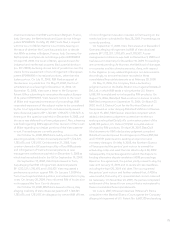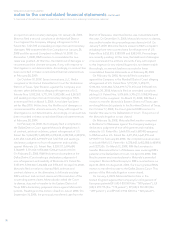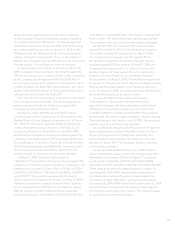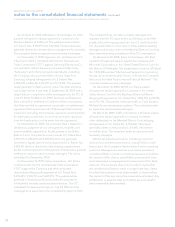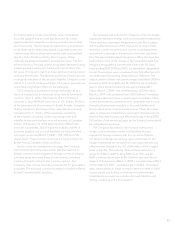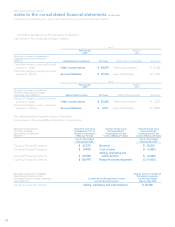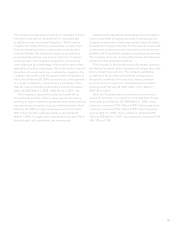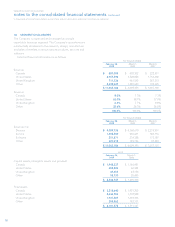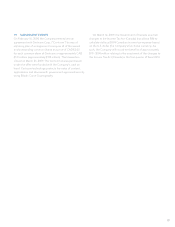Blackberry 2009 Annual Report Download - page 87
Download and view the complete annual report
Please find page 87 of the 2009 Blackberry annual report below. You can navigate through the pages in the report by either clicking on the pages listed below, or by using the keyword search tool below to find specific information within the annual report.85
The Company is exposed to credit risk on derivative financial
instruments arising from the potential for counterparties
to default on their contractual obligations. The Company
mitigates this risk by limiting counterparties to highly rated
financial institutions and by continuously monitoring their
creditworthiness. The Company’s exposure to credit loss
and market risk will vary over time as a function of currency
exchange rates. The Company measures its counterparty
credit exposure as a percentage of the total fair value of the
applicable derivative instruments. Where the net fair value of
derivative instruments with any counterparty is negative, the
Company deems the credit exposure to that counterparty to
be nil. As at February 28, 2009, the maximum credit exposure
to a single counterparty, measured as a percentage of the
total fair value of derivative instruments with net unrealized
gains was 60% (March 1, 2008 – 40%; March 3, 2007 – nil).
The Company is exposed to market and credit risk on
its investment portfolio. The Company reduces this risk by
investing in liquid, investment grade securities and by limiting
exposure to any one entity or group of related entities. As at
February 28, 2009, no single issuer represented more than
12% of the total cash, cash equivalents and investments
(March 1, 2008, no single issuer represented more than 9% of
the total cash, cash equivalents and investments).
Cash and cash equivalents and investments are invested in
certain instruments of varying maturities. Consequently, the
Company is exposed to interest rate risk as a result of holding
investments of varying maturities. The fair value of investments,
as well as the investment income derived from the investment
portfolio, will fluctuate with changes in prevailing interest rates.
The Company does not currently utilize interest rate derivative
instruments in its investment portfolio.
The Company, in the normal course of business, monitors
the financial condition of its customers and reviews the credit
history of each new customer. The Company establishes
an allowance for doubtful accounts that corresponds to
the specific credit risk of its customers, historical trends
and economic circumstances. The allowance for doubtful
accounts as at February 28, 2009 is $2.1 million (March 1,
2008- $2.0 million).
While the Company sells its products and services to a
variety of customers, one customer comprised 29% of trade
receivables as at February 28, 2009 (March 1, 2008 - three
customers comprised 19%, 14% and 10%). Additionally, three
customers comprised 23%, 14% and 10% of the Company’s
revenue (March 1, 2008 - three customers comprised 21%,
15% and 12%; March 3, 2007 - four customers comprised 19%,
14%, 11% and 11%).


